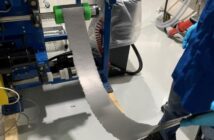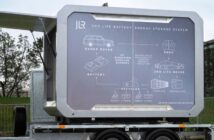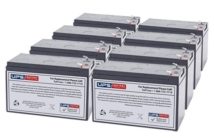Do you remember when you had a rubber-band-power airplane when you were a kid? By winding the propeller round and round, you twisted the rubber until it was full of kinetic energy. And you could release that energy to spin the propeller and fly the model plane. Flywheel energy storage also accumulates kinetic energy by rotation, although the operating principles are a little different.
Steady On, Isn’t This Site Supposed to be About Batteries?

Well yes you’re right, it is although it also explores ways to extend the lifespan of our planet. This is about the best that we can pray for now, although we hope the situation improves on our lifetime.
However, there is a crossover between batteries, flywheel energy storage, and rubber-band-power airplanes. We store energy in batteries for future use too. Moreover, batteries are able to do this on a large scale nowadays. This has become the key to smoothing wind and solar power.
How Flywheel Energy Storage Complements Renewables
A flywheel is a rapidly spinning rotor feeding off surplus electricity in a local or community grid. It turns in a virtually frictionless environment resting in magnetically-levitated bearings. Hence, it requires little energy to keep it spinning when it is up to speed. This kinetic energy may be released in several ways.

In the event a green community or local power grid becomes short of power, a flywheel could drive a generator. This might happen when clouds obscure the sun. Or the wind drops in the evening. A short while later, reliable battery storage takes over to sustain the grid.
In this way, flywheels are able to bridge the gap between regular power and long-term storage. Energy capacity is a function of rotating speed. Hence, the search is on to reduce the amount of friction inherent in the system.
Flywheel energy storage is low maintenance, and capable of between 100,000 and 175,000 full-depth discharge cycles. However the commercial uptake has been slow, and so we have another potential life-saver waiting in the wings.
Related
Kodiak Island Points to Greener Future For All
Connecting Flywheel Energy to the UK Grid
Preview Image: Flywheel Demonstrator




